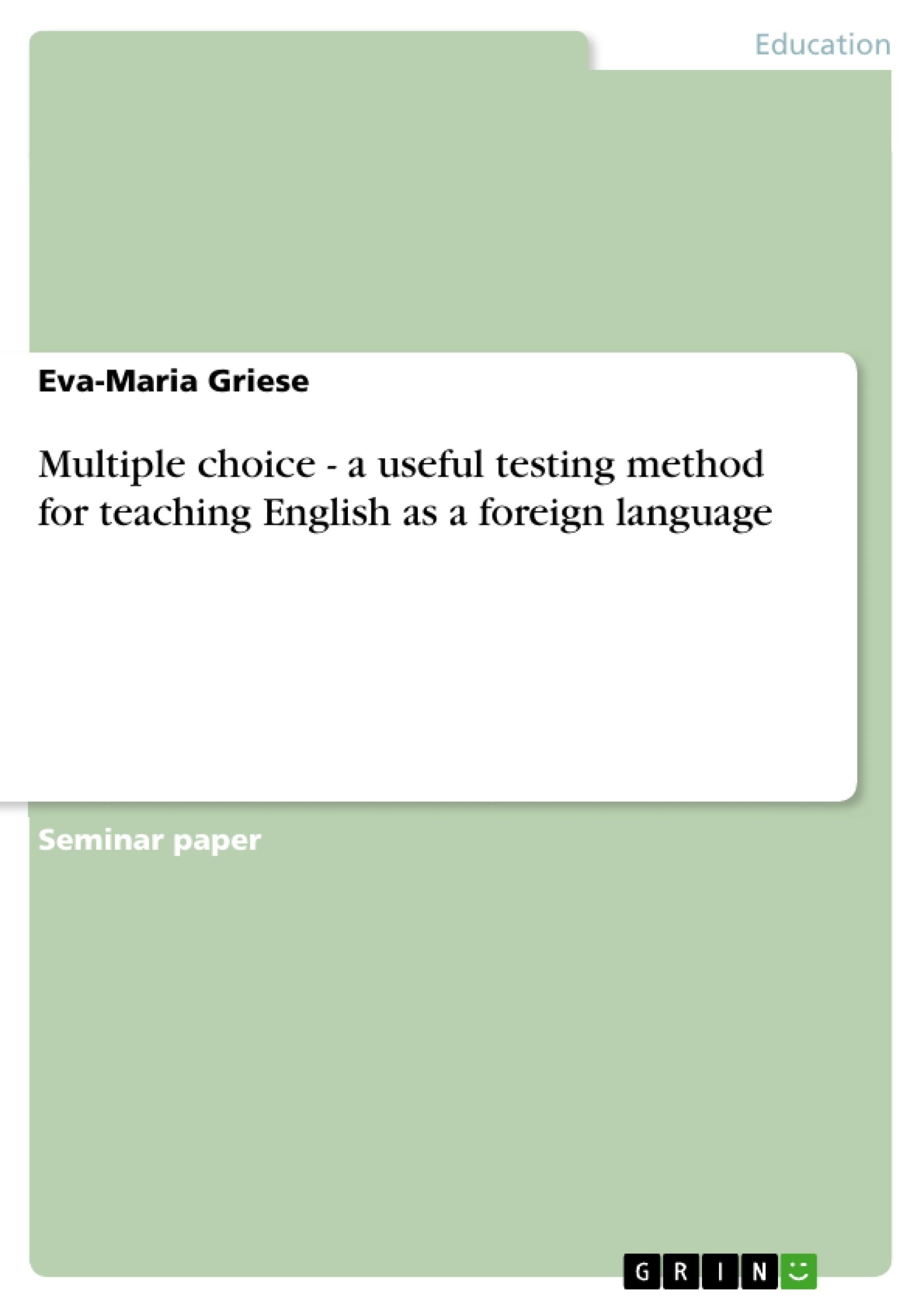Diese Arbeit untersucht, ob es sinnvoll ist, multiple-choice als Testmethode im Englischunterricht zu verwenden.
Es wird aufgezeigt, unter welchen Bedingungen, multiple-choice erfolgreich im Englischunterricht angewandt werden kann.
Table of Contents
- 1. Introduction
- 2. Student assessment and testing
- 3. Testing methods
- 4. Construction of multiple-choice items
- 4.1. Using multiple-choice to test vocabulary
- 4.2. Using multiple-choice to test grammar
- 4.3. Using multiple-choice to test reading comprehension
- 4.4. Using multiple-choice to test listening comprehension
- 5. Conclusion
Objectives and Key Themes
This paper aims to provide an introduction to the theoretical basis of testing and different types of exercises used for assessing student performance in English as a Foreign Language (EFL). It focuses on the construction and use of multiple-choice tests, highlighting their advantages and disadvantages in the context of EFL teaching.
- Testing methods and criteria
- Multiple-choice test construction
- Evaluating language skills through multiple-choice tests
- Advantages and disadvantages of multiple-choice tests
- The role of multiple-choice tests in EFL education
Chapter Summaries
- Chapter 1: Introduction: This chapter introduces the paper's focus on testing methods, particularly multiple-choice tests, in the context of EFL teaching. It emphasizes the importance of student assessment and the role of tests in evaluating learning success.
- Chapter 2: Student assessment and testing: This chapter discusses the importance of student assessment for both the teacher and the learner. It explores the reasons for external assessment, including documenting progress, motivating learners, and providing feedback. The chapter also addresses the potential limitations of traditional testing methods.
- Chapter 3: Testing methods: This chapter delves into various testing methods, highlighting the criteria of reliability and validity. It explores the three main learning targets in language acquisition: language subsystems, communicative skills, and cultural competence. The chapter introduces the distinction between long and short answer test questions, further dividing short answer questions into open and closed answers.
Keywords
The main keywords and focus topics of this work are: testing methods, multiple-choice tests, EFL teaching, student assessment, language skills, validity, reliability, test construction, advantages, disadvantages, and educational context.
- Citation du texte
- Eva-Maria Griese (Auteur), 2005, Multiple choice - a useful testing method for teaching English as a foreign language, Munich, GRIN Verlag, https://www.grin.com/document/64363



